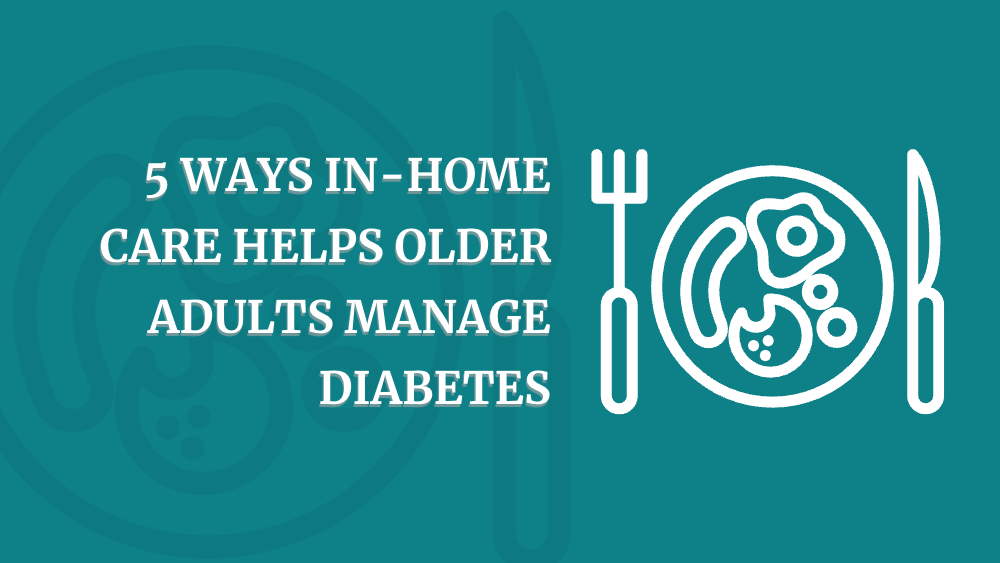

Tips for People With Diabetes: Eating Healthy Over the Holidays
Food is a much-anticipated part of Thanksgiving, Hanukkah, Christmas, Kwanzaa, Easter, Independence Day, and other holidays. Senses and emotions get attached to holiday feasts, activating memories by tastes or smells. Special holiday dishes are hard to resist. If you have diabetes, it can be hazardous if you overindulge and have serious health consequences. Here are some tips to help.
Diabetes and Older Adults
An estimated 33% of adults age 65 or older have diabetes. Seniors living with it are more at risk of developing acute complications, such as hypoglycemia (low blood sugar), kidney failure, heart attacks, strokes, and vision problems, than younger people.
Much of what seniors can do to control their diabetes revolves around food intake. With World Diabetes Awareness Day on November 14, landing right before major holidays, seniors would do well to remember they can manage the disease by eating smaller portions and making healthy choices that avoid high-fat, high-carb foods.
Just as excess eating can contribute to obesity and diabetes, consuming fewer empty calories helps keep extra pounds off and helps manage diabetes. Since regular exercise can help avoid weight gain and can help regulate blood glucose levels, it’s a recommended part of any plan for seniors with Type I or Type II diabetes. Thus, staying healthy during the holidays means eating right and exercising between meals.
Changing old eating habits can be hard for seniors, but it’s not only doable, it’s worth it because it reduces the risk of developing co-morbidities that compromise quality of life and shorten life span.
Diabetes doesn’t have to mean cutting out favorite foods, but it does require discipline in terms of what and how you eat.
Practice moderation, portion control, and balance.
- Instead of piling every favorite food on your holiday plate at mealtime, consider skipping or saving some favorites, especially the high-carb ones. Resist going back for seconds. Reserve leftovers for the next day or freeze them for a rainy day.
- Any holiday meal should include a good protein source (lean meat, fish, dairy). Try to replace at least some high-starch vegetables (potatoes, corn, beans) with non-starchy veggies (broccoli, tomatoes, zucchini). If it’s too hard to do without the starch, remember to eat in moderation.
- Keep bread intake to a bare minimum because it’s generally high in carbs.
- Eat whole fruits and whole grains. These are always a smart choice because their high fiber will help maintain stable blood glucose levels.
- Consider bite-size rather than whole desserts. Satisfy sweet tooth cravings within healthy moderation limits.
- Avoid alcohol. Alcohol can impair appetite control, lower blood sugar, and adversely interact with diabetes medicines. If you must drink, do it with food or on a full stomach.
- Get plenty of sleep. Being well rested can help resist giving in to appetite cravings. Sleep deprivation makes folks more vulnerable to cravings.
- Drink plenty of water. Water is a natural appetite suppressant. Having enough water in your system can lead to a feeling of fullness and thus reduce hunger pangs. Often, the sensation of hunger can be alleviated by drinking water.
Out with the bad and in with the good.
- Substitute low-fat, fat-free, low-sugar or sugar-free food options when possible. Instead of ice cream, try frozen yogurt. Try avocado spread in place of mayo.
- A balance of food that includes carbohydrates, proteins, fats and fiber will help blood glucose levels stay even, which is why it’s wise to include two or three food groups at meals and two or more food groups for snacks.
- Avoid unhealthy snacks such as sweets and potato chips and instead try raw fruits and veggies, nuts, raisins, dates and prunes.
- Thanks to the web, it’s easy to find recipes for almost any holiday meal that substitute unhealthy ingredients with healthy ones without sacrificing texture or flavor.
Don’t skip meals, especially breakfast.
- Research shows that skipping meals, particularly breakfast, can lead to higher blood sugar spikes following meals and poor glucose control overall.
- Eat a balanced meal soon after waking up to avoid sharp blood sugar spikes later in the day.
- Eat snacks between meals throughout the day to maintain healthy blood sugar levels. If planning to eat a meal at an odd time of day, consume snacks at normal mealtimes to avoid drops in blood sugar.
- Don’t “starve” before a big meal because that will only destabilize blood sugar levels and increase the odds of overeating. It’s better to eat a snack beforehand, ideally one that combines complex carbohydrates with protein and unsaturated fat, than to wade into a major meal on an empty stomach.
Walk or take some form of exercise or physical activity after meals.
- Exercise improves insulin sensitivity and is beneficial for managing diabetes.
- Whether taking a walk, playing a game of touch football, line dancing, tossing a Frisbee, raking leaves, or working in the garden, get up and move to work off calories and regulate blood sugar levels.
- If it’s not already one, consider creating a family activity tradition to follow the holiday meal. Be creative and have fun with it. If it’s spring, summer or fall, consider a short group hike or bike ride. Plant a tree. Deliver Thanksgiving or Christmas food baskets. Go door to door singing carols. For families in snow country, tobogganing and skiing are options for the spry set. There’s building snowmen, snow angels, or igloos—and having snowball fights—for everybody else. If there’s safe ice nearby, have a skate fest.
Luxuriate in Your Holiday Mealtime and Together Time
Last but not least, savor any meal, especially holiday meals that may only be served once a year when family and friends gather to eat. Soak the experience in. Eat slowly, which can curb appetite, reduce overeating, and help make each morsel memorable. This considered and intentional approach to enjoying a meal can mean you don’t have to skimp as much as you would otherwise. An ounce of preparation and deliberation can keep you around to enjoy future holiday spreads with friends and loved ones.
How Right at Home Can Help
Professional in-home care is a valuable resource for successfully managing chronic conditions. Right at Home offers a wide range of in-home care services. Our caregivers can provide transportation to doctor appointments, help keep track of medications, and be alert for any signs of side effects. They can also help with ambulation and hygiene as needed. Use our office locator to find your local Right at Home and ask for a FREE care consultation today.







